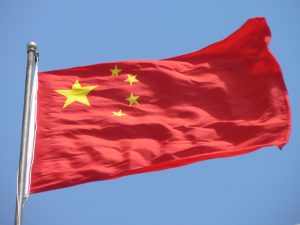Today, Sydney’s Lowy Institute published new research showing that China has lost its status the largest single provider of development financing to Southeast Asia since the onset of the COVID-19 pandemic.
The Southeast Asia Aid Map, which was released yesterday as an interactive map and accompanying report, tracks financing for more than 107,000 development projects funded by 97 development partners – both foreign governments and international non-government organizations – between 2015 and 2021. The data covers projects in all 11 Southeast Asian nations.
The institute found that during that period, the region received about $200 billion in official development finance – an average of around $28 billion per year – in a mix of grants, concessional and non-concessional development loans.
Of this, China contributed about $5.5 billion annually, about three-quarters of which went toward the construction of infrastructure, making it the region’s single largest development partner for the entire period in question. Chinese support was tightly concentrated in certain nations; it was the top bilateral lender in Cambodia, Indonesia, Laos, Malaysia, and Thailand – surprisingly, in the case of the latter two nations, considering that are both among the region’s most economically developed countries.
However, the “most striking trend” in Chinese overseas development finance to Southeast Asia has been the “decline in China’s relative importance as a partner,” the report stated. In 2015, China provided around 24 percent of the region’s overseas development finance. By 2021, this had fallen to 14 percent.
This is due in part to the sluggish progress on headline infrastructure projects, such as the multi-billion dollar East Coast Rail Link in Malaysia and a perpetually delayed high-speed rail project in Thailand. It also reflects the economic slowdown within China, due in part to the country’s severe “zero COVID” policy. Economic uncertainty has prompted Chinese state banks to disburse loans more cautiously than in previous years.
As a result, while China remained the single largest development partner for the overall 2015-2021 period, it was “consequently overtaken as the region’s leading ODF provider by several traditional development partners during 2020 and 2021,” when these partners dramatically ramped up financing in response to the COVID-19 pandemic. As Lowy researcher Alexandre Dayant told the ABC. “It’s more and more difficult to get a loan out of China nowadays, because China is becoming more and more cautious about how it provides financing.”
Overall, the region’s “traditional” development partners – the industrialized nations of the West and East Asia, and the large development banks and international financial institutions – collectively provided about 80 percent of ODA to Southeast Asian nations over the 2015-2021 period. Compared to China, this is provided “generally on much more concessional terms, and for broader development purposes beyond infrastructure such as governance, health, and education.”
Among the chief actors in this space were the Asian Development Bank (ADB), which provided an average of $4.49 billion in support annually for 2015-2021, and the World Bank ($4.1 billion). Aside from China, the top bilateral donors were Japan ($4.03 billion) and South Korea ($2.92 billion).
The report offers data to support more anecdotal reports that Chinese development financing has slackened since the onset of COVID-19, retreating from the financially promiscuous “checkbook diplomacy” of the 2010s to a more moderated and cautious approach to overseas lending.
Even in infrastructure, a sector in which China has established itself in a position of dominance, it faces increasing competition from the likes of Japan, the World Bank, and ADB. Unsurprisingly, this has been paralleled by Beijing’s cooling rhetoric on the Belt and Road Initiative, under which many of these Chinese development projects were grouped, amid the rise of the Global Security Initiative and Global Development Initiative.
The report notes that while China did make significant financial commitments in 2021, “the lingering effects of the pandemic will likely continue to disrupt its ability to actually disburse those investments.”
Taken as a whole, the Southeast Asia Aid Map suggests that the future of Southeast Asian development finance, far from being dominated by any one nation, will remain diverse and variegated.

































